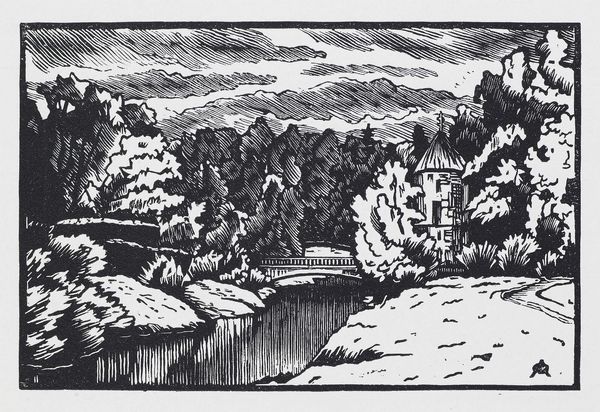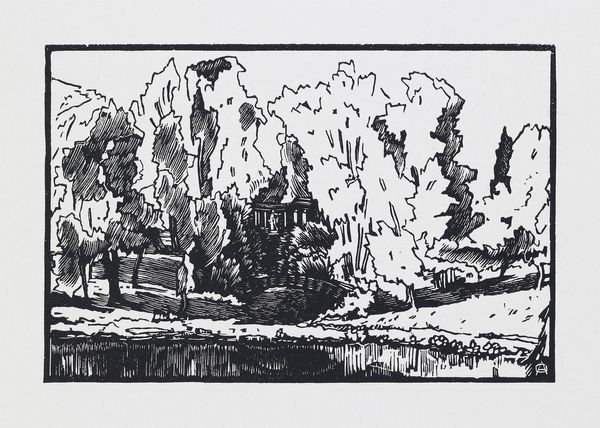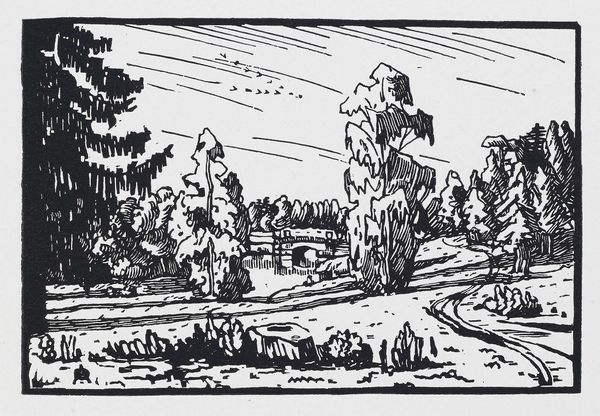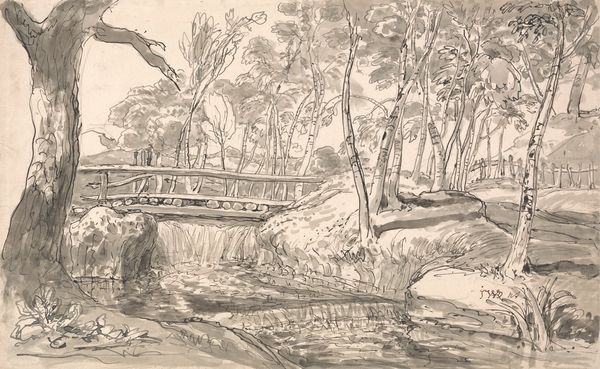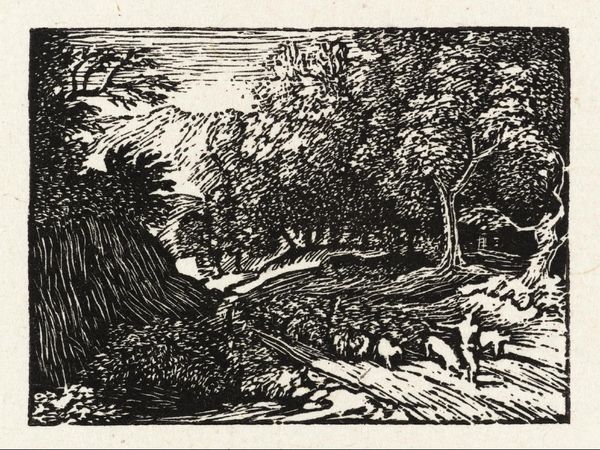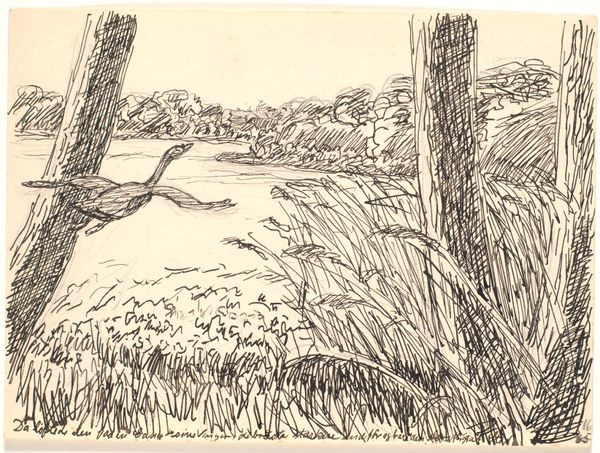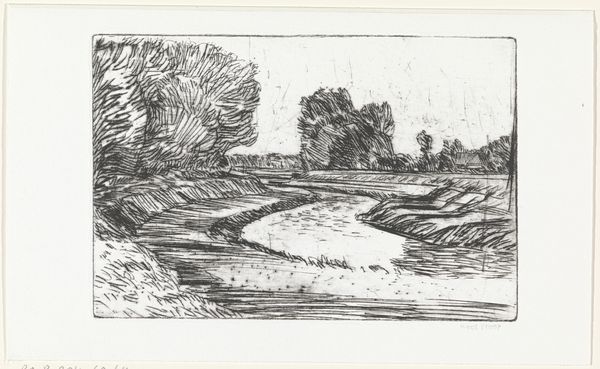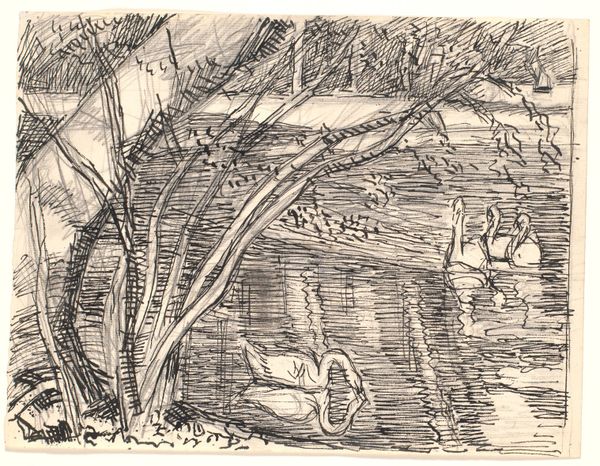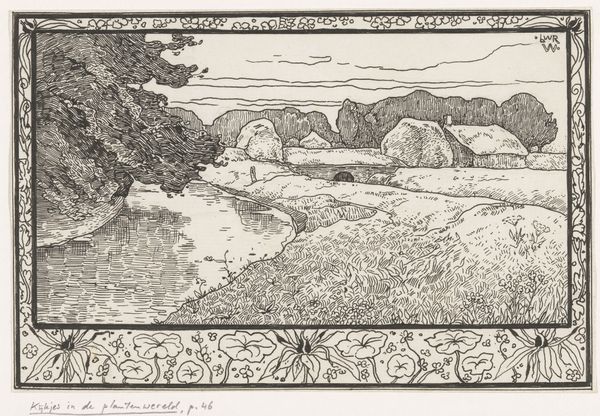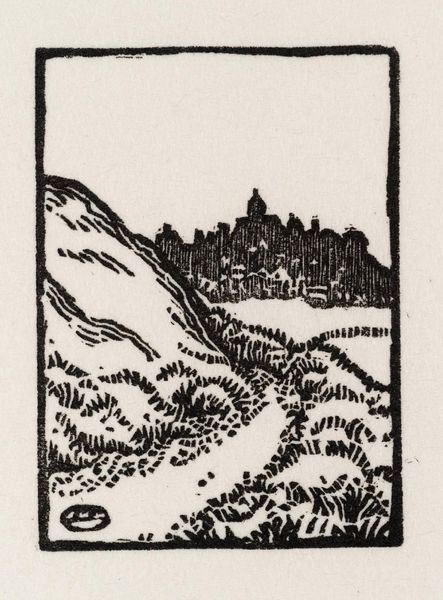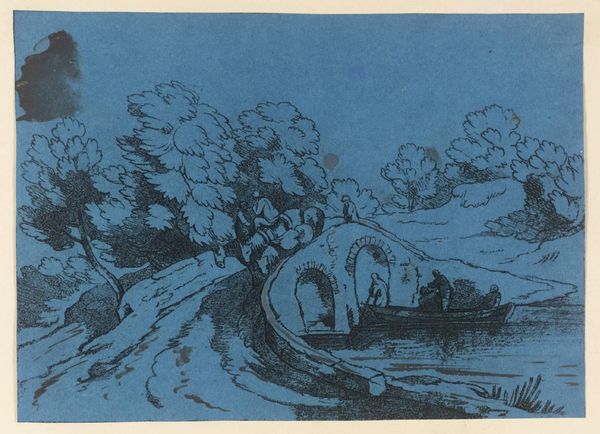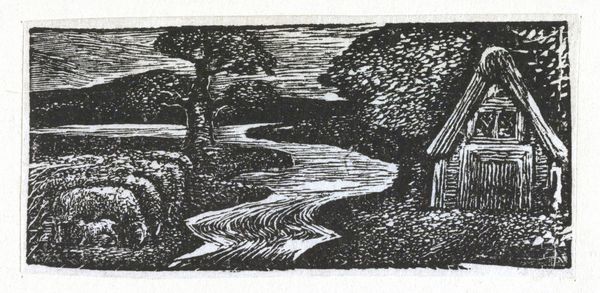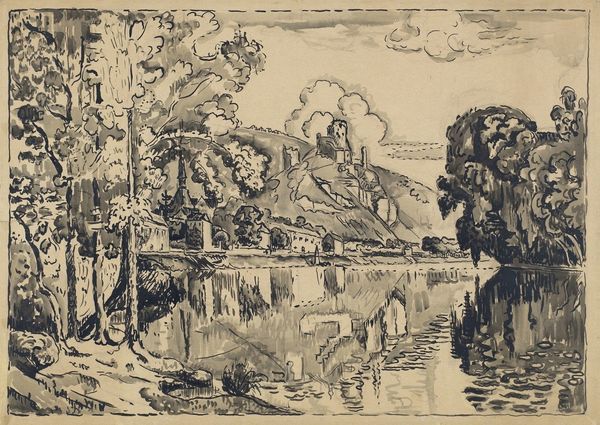
Copyright: Public domain US
Curator: This piece by Anna Ostroumova-Lebedeva, titled "Willows near Novosilviysky Bridge," created in 1923, presents a rather somber, even melancholic mood, despite the ostensibly pastoral subject. Editor: Indeed. The stark contrast between the dense blacks and crisp whites yields a dramatic, graphic quality. The composition seems meticulously crafted. The balance between light and shadow evokes a certain sense of depth and volume, which is quite remarkable for a woodcut. Curator: As a woodcut, its medium is deeply connected to the socio-political context of early 20th-century Russia. Printmaking allowed for wider distribution of imagery and ideas during periods of immense social upheaval and reform. The printmaker becomes a conduit. Editor: Looking closely, the deliberate variations in line thickness command attention. The reflections in the water, the foliage—each element rendered with remarkable precision. There's an almost geometric underpinning that provides structure. Do you agree? Curator: Certainly. This area of the city played an important role. Following the revolution there was interest to make art accessible. Note the almost utilitarian aspect; how the scene transforms into a visual experience accessible and easily distributable to all levels of society. Editor: I am intrigued how it defies conventional landscape expectations. Although appearing quite accessible on first encounter, it becomes structurally complex when viewed closely, using a binary spectrum to represent this quite subtle landscape moment. Curator: Absolutely. Lebedeva's landscapes served not merely as aesthetic exercises, but played a larger role in fostering pride and celebrating spaces amongst the Russian population. Editor: Reflecting, I would consider this print as more than just a recording of a natural scene; it stands as a well-crafted intersection where graphic art and deeply contextual societal aspects interweave. Curator: Yes, exactly. It gives a unique window into how art acted during intense change within a society seeking reform. It reveals, more than merely aesthetic talent, her awareness of how art functions as public discourse.
Comments
No comments
Be the first to comment and join the conversation on the ultimate creative platform.
